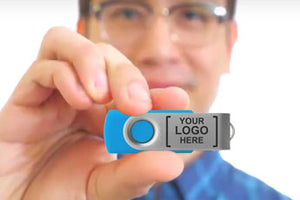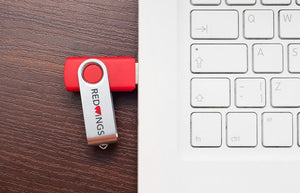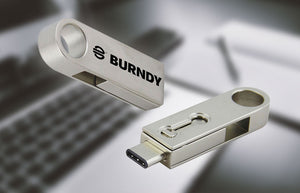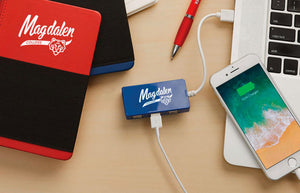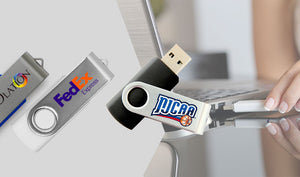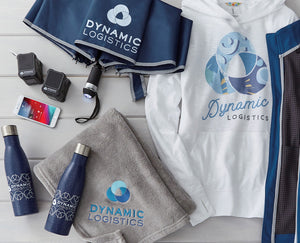Brand Guidelines & Colors For Promo Items
We do a lot of work with companies of all sizes. Promotional products, and particularly USB Flash Drives are so widely used that there isn’t a company that doesn’t find some application for them. Whether it is pens for the office, or giveaways for the trade show, or client gifts, businesses get their names out there with all sorts of promo items.
When companies start getting into promotional product marketing, one of the first challenges is color. This seems easy, right? If you haven’t thought about it, it’s not. Here is a scenario that is not terribly uncommon.
The Color Problem in Promo Marketing
A client calls us and wants a new custom USB design for an upcoming trade show. But, they want the colors to match the background on the banner they’ve been using for the past few years.
The color is “blue.”
If you’ve ever been paint-shopping, you know there is no color “blue” anymore. “Blue” is a family of colors. So is orange, green, yellow, red…
We inquire if they know which blue? Do they have a CMYK, or PMS, or hex color code? Often, no, they do not. But, what they can do is take a picture of the banner and email it to us.
You know where this is going, right? Every camera “sees” and records color slightly differently. Every monitor displays color slightly (or even drastically) differently. What we see on the screen doesn’t really match the actual color on the banner.
In these cases, we do your best to find a way to match the color as closely as possible. But, there will be some variation.
Brand Guidelines
Most big businesses or well-known brands have Brand Guidelines. These tend to be long documents that detail every aspect of the brand’s color, fonts, logo, placements, context, etc. If you have a question about how a logo can be used, the answer is in the brand guidelines.
The One-Page Brand Guidelines
But, Brand Guidelines aren’t just for the big players, and certainly, don’t have to be overly elaborate or long. For small companies, a one-page document that has a few basic elements can make executing your marketing much easier.
What Goes Into Brand Guidelines?
- Your Colors. The primary color and secondary colors. Use both examples and the PMS, CMYK, RGB, Hex values.
- Your Font. It doesn’t have to be a fancy or custom font. You are looking for consistency once you’ve selected it.
- Your Logo and its variations. You may have a logo that incorporates your name, and an icon or mark. Show how these can look if separated (some applications are not large enough for an entire logo)
- Taglines. These can change but set a tone for your communications.
Using Brand Guidelines
Brand Guidelines make communicating with vendors much easier. If your banner background color was properly selected, it would be one of your brand’s secondary colors. You wouldn’t have to try to match it, nor dig for paperwork to see if you can find the instructions for the original print production job. It is consistent. All you need to do is let the promotional product vendor know what the PMS code (or other) is.
But, it goes well beyond color. Your logo file is all set, along with how it can be displayed on the item. Tagline(s) are ready to go, and you know what font to use. By creating a simple one-page Brand Guidelines document, you can quickly share your specs with marketing vendors and get on with your other tasks.
 Thanksgiving sale! Use code:
Thanksgiving sale! Use code:  Black Friday Sale! Use code:
Black Friday Sale! Use code:  Cyber Monday! Use code:
Cyber Monday! Use code:  Giving Tuesday! For every order we will donate a toy to TOYS FOR TOTS
Giving Tuesday! For every order we will donate a toy to TOYS FOR TOTS
